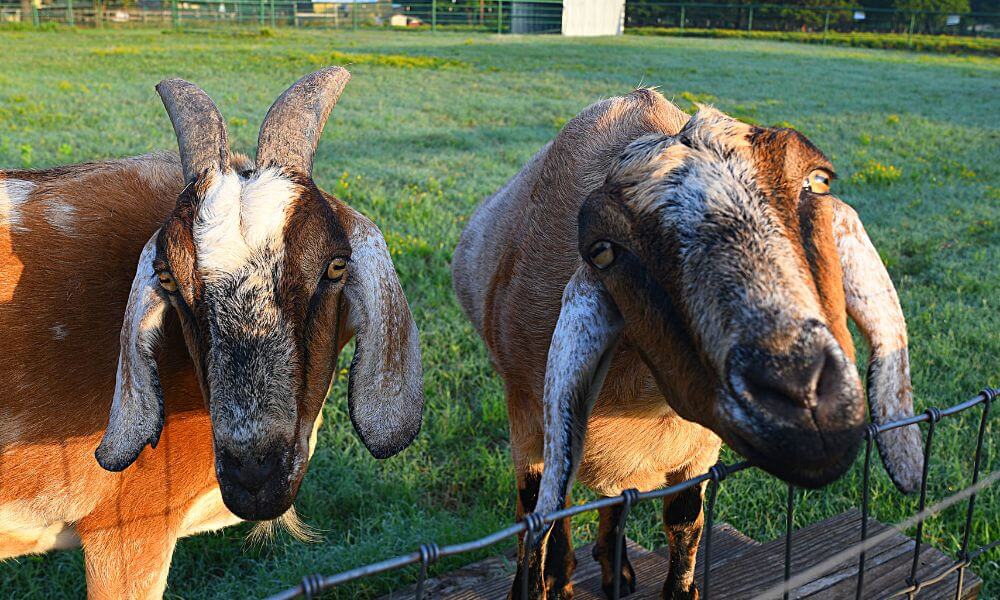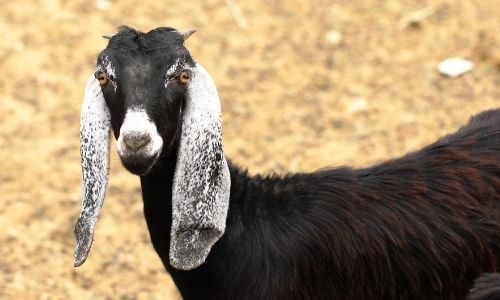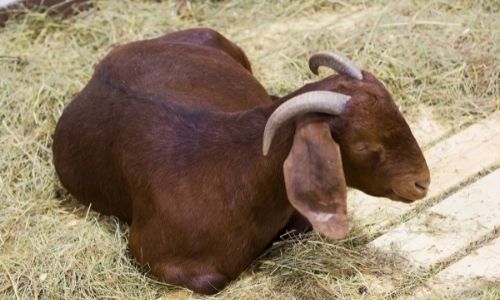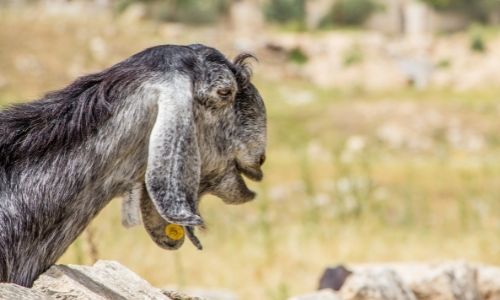Goats are almost as varied in appearance and pedigree as dogs are today.
They are used for such a wide variety of functions, in every conceivable climate, and this has naturally led to a lot of variation in appearance and temperament.
One of the biggest differences you can often see between different goat breeds is the length of their ears.
Today, we’re going to look at some of the best goat breeds that have long ears—from the more reasonable lengths to the truly amazing.
Let’s get started.

Nubian

The Nubian is definitely the most famous long-eared goat.
This breed originated in Britain in the 19th Century, a cross between native goats and those imported from across the world—particularly India, the Middle East and North Africa.
They are really popular as both meat and milk goats, but the first thing you notice about them is their long, flappy ears.
They typically reach down to just below their heads.
They will be easy to find if you are interested in this breed as they are one of the most popular in the world.
Bhuj
Moving over to South America now, we have the Bhuj breed.
These are typically found across the north east of Brazil.
Here in this warmer climate, they are used for both meat and milk production, and come in black and white varieties.
Their ears are even longer than Nubians, typically, and can in extreme cases even reach the floor when the goat is young.
They were bred from the Kutchi breed—this breed in turn originated in India.
They are great companion goats, with friendly temperaments.
If you’re looking for a long-eared goat friend, they could be the one for you.
Boer

Another of the more common varieties in the world is the Boer goat.
As the name suggests, they are a South African breed typically bred for meat.
They originated in the early 20th Century in the Eastern Cape, and are well adapted to grazing on the thorn veldt found there.
Their ears are not quite as long as some of those we’ve looked at so far, but are still fantastic to behold.
They frame their faces beautifully, typically brown in contrast to their white bodies.
Boer goats are on the larger side, but they’re nonetheless great companion goats if you have the space for them.
Kalahari red

Some suggest that the Kalahari red is actually simply a solid red variety of the Boer goat, or the Savanna goat.
In fact, they are indeed their own distinct breed, and they are beloved for their fantastic coats and long ears.
They were bred with Namibian landraces and similar stock to Boer goats, but they are a distinct breed.
Again, they do not have the longest ears of any goat—they typically reach to about their jaw.
But they are nonetheless adorable and they are friendly goats to keep.
Savanna
You might be forgiven for mistaking this breed for a sheep.
Again developed by the cross-breeding of multiple South African goats, this breed, as I mentioned, was also simply thought of as a white Boer for some time.
They are, in fact, a distinct breed.
They have fluffy white coats and are not as large as Boer goats, making them even better for smaller companions to have around the homestead.
Their ears are long and flappy like a Boer or Kalahari.
Damascus

The Damascus goat is one of the most unusual breeds around.
They have huge, bulbous heads, and often a large underbite.
They are bred in the Middle East as prize goats, favored for their unusual appearance.
Though their ears are sometimes clipped, if they aren’t, they can grow to very impressive lengths.
Again, as kids, they can even reach down to the ground.
These goats can be very expensive, but if you’ve got the money to spare and can find a breeder, they make a great long-eared companion to have.
Black Bengal
No prizes for figuring out where this goat was originally bred!
They are today found throughout Bangladesh, western Bengal, and other regions near and in India.
They are most commonly found in black, but also sometimes have white or grey fur.
They are better as meat goats, as they don’t produce much milk.
They play a hugely important role in the Bangladesh economy, and all the while having adorably long ears.
They aren’t as widely bred and distributed here in the United States, but if you have your hear set on one, you may be able to find a breeder.
Gulabi
Undoubtedly featuring some of the longest ears of any goat breed in the world is the Gulabi.
They are all white in color and have some pink skin—which is where they get their name.
Gulabi means pink.
Their ears are very long, almost reaching as far down as the top of their legs.
When they are kids, their ears typically reach the floor as they grow.
These are the crown jewel of long-eared goats.
They are beautiful and flowing, and the goats themselves are relatively easy to keep.
These are some of the most impressive ears in the goat kingdom.
Some are long, flowing, and majestic, others are shorter, but still flappy and impressively long.
Whether you’re in the market for a long-eared goat or you’re just out to look at some varieties of long-eared goats, hopefully, our list here has fulfilled your needs.
